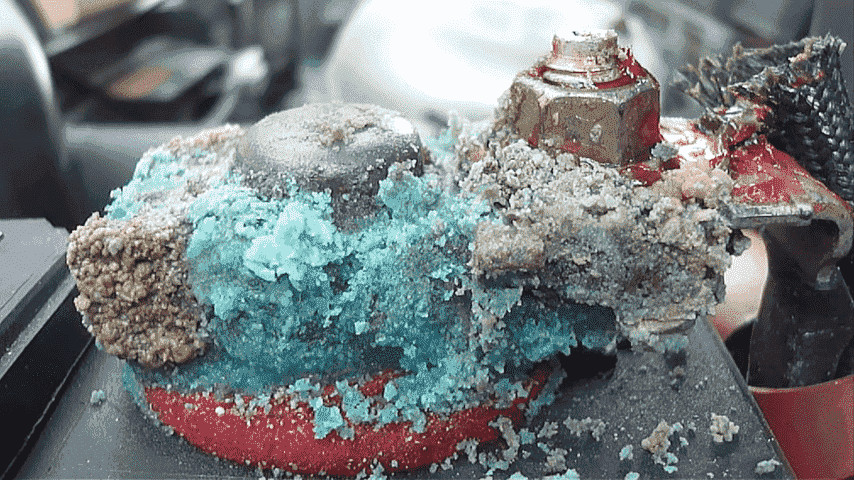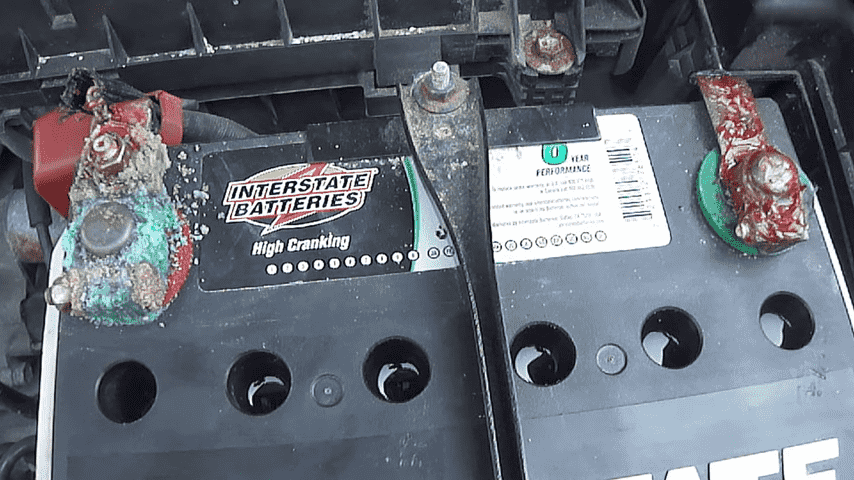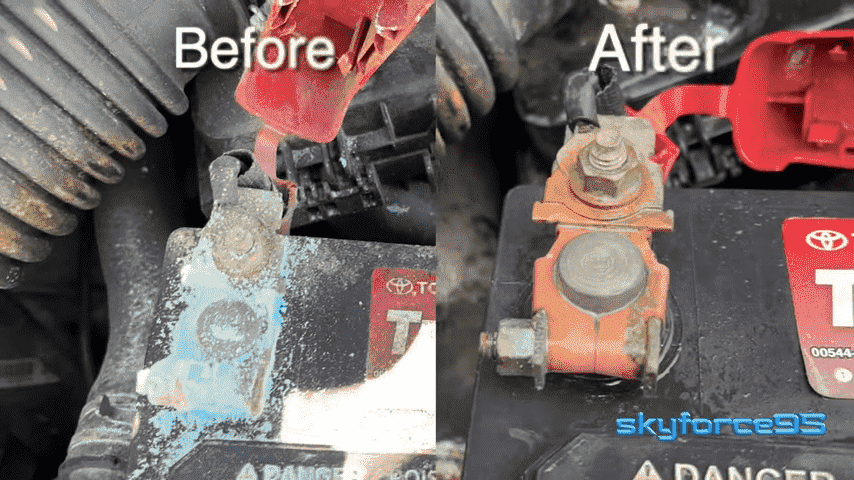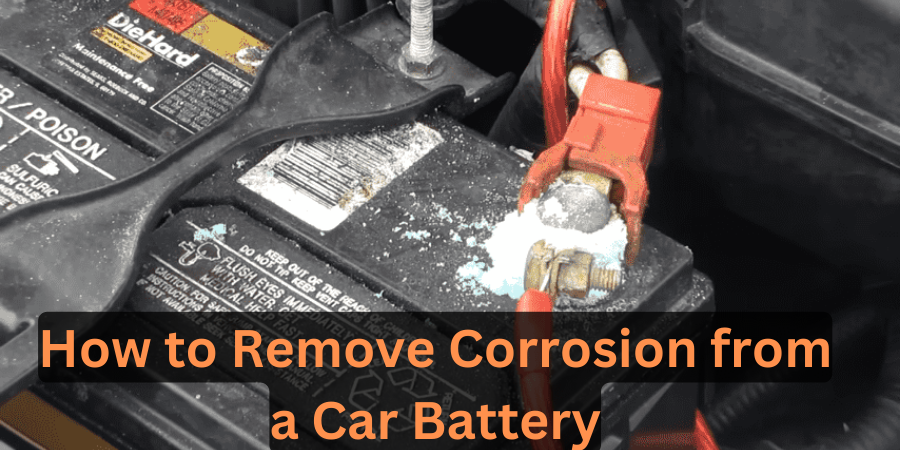Car batteries are the life of any car. It supplies the electrical power required to start the car engine and other electrical appliances. Corrosion gradually thickens on the battery terminal, and this might cause problems with starting the vehicle. This article will explain how best you can bring your car to the next level of performance by cleaning the car battery of corrosion.
Definition of Corrosion

Corrosion can be defined as the spontaneous degradation of metal of its original form as a result of its reaction with its surroundings. Cor corrosion usually develops in cars as a result of the interaction between battery acid and metal contacts.
Factors Resulting in Corrosion of Car Batteries
Corrosion in car batteries is primarily caused by the following factors:
- Electrolyte Leakage: Battery acid can spill out, and thus, it has a corrosive nature.
- Hydrogen Gas: The charging process also presents a problem as hydrogen can be released, which can result in corrosion.
- Environmental Factors: The elements such as moisture, road salt, and other related ecological factors worsen corrosion.
Types of Corrosion
White, Powdery Corrosion
This type of corrosion is white and powdery and can be seen deposited in the terminals of the batteries. It is caused by electrolyte leakage and can be washed off using cleaning solutions or simple washing with water.
Green or Blue Corrosion

Green or blue corrosion is rare, and this usually depicts a higher class of corrosion. It is usually said that the type of corrosion is difficult to clean and may need a more severe cleaning process.
Comparison with Other Types of Battery Issues
Corrosion is not synonymous with other battery problems, such as sulfation or physical damage. While corrosion is the process in which the battery terminals and connection get eaten up as a result, Sulfation is the process through which lead sulfate crystals deposit themselves on the plates in the battery.
Symptoms of Corroded Battery Terminals
Difficulty Starting the Vehicle
The toughest thing you will have to notice with rusty battery terminals is when it becomes difficult to start the vehicle. Corrosion affects the conductivity of electricity, and due to this, the engine can have a hard time starting.
Visible Corrosion Build-Up
Corrosion mainly shows up as a white, powdery substance or any other color of powder-like substance around the battery terminals. Well, a timely inspection will enable you to see signs of corrosion which is the first stage.
Electrical Issues
You will also be able to observe various electrical problems with your vehicle, such as dull headlights, blinking car dashboard lights, and other electrical nuisances.
Tools and Materials Needed
Safety Gear
- Safety Glasses: To prevent the liquid from touching your facial features, particularly your eyes.
- Gloves: To protect your hands from the spilling battery acid.
Cleaning Supplies
- Baking Soda: An acid soluble in water with a low solubility, that is, an only slightly abrasive and neutralizing agent.
- Water: For whipping with baking soda.
- Commercial Battery Cleaners can be bought at auto parts stores for the tougher corrosion.
Battery Maintenance Tools
- Wire Brush: For labor removal of the corrosion :
- Battery Terminal Cleaner: This is to encourage proper cleaning of the equipment in order to remove all the sweat that the player might have perspired during the game.
Preparation Before Cleaning
Safety Precautions
- Ventilation: It is wise to work in a well-ventilated area to minimize inhaling toxic fumes.
- Avoid Sparks: Do not allow flames and/or sparks to come close to the battery.
Disconnecting the Battery
It is important always to remove the negative terminal first to avoid unwanted short circuits. Next, the positive terminal must be removed as well.
Cleaning the Battery and the Terminals

The following are some of the recommendations that one should undertake before cleaning a battery: Check on the terminals to make sure that they are not overly twisted, dull, or rusty.
How to Treat and Prevent Corrosion
Cleaning with Baking Soda and Water
- Mix Solution: The teacher prepared a paste by mixing some baking soda and water.
- Apply Paste: Mask the area of the corroded terminals by spreading the paste over it.
- Scrub: To clean the surface of the corrosion, you should use a wire brush or an old toothbrush.
- Rinse: After that, wash the terminals with water in order to remove the residue.
- Dry: After rinse the terminals with distilled water, wipe the terminals dry with a clean cloth.
Reconnecting the Battery
Proper Reconnection Procedure
- Connect Positive Terminal: Begin by touching the positive terminal again:
- Connect Negative Terminal: These are followed by restoring the negative terminal connection.
- Tighten Connections: Make certain that terminals are well-tightened to check on bad connections.
Ensuring Secure Connections
Look at the connection and ensure they are well connected and do not show any signs of rusting. Rubber isolators and nuts and bolts are susceptible to perishing and internal corrosion, resulting in ragged threads that may cause starting problems and/or electrical faults.
Testing the Battery
Switch on the vehicle to check on the battery that you had charged. Look for abstractions that might indicate a poor start or electrical problems.
Common Mistakes to Avoid
Overuse of Cleaning Agents
Abrasive surfaces and cleaning agents on the battery and terminals are discouraging and have a destructive impact on the car battery. This means one should only administer the recommended dosage and follow all the instructions astringently.
Ignoring Safety Precautions
One should ensure proper measures are taken to avoid health complications, wear protective clothing, and conduct the exercises in a room with proper ventilation. Shun direct contact with battery acid.
Improper Battery Reinstallation
Double-check the battery and its connections to make sure that it properly fits in its right position. If the battery is not installed correctly, there might be some problems with starting and electrical systems.
Final Words
The manner in which car batteries can be charged and maintained should be followed to increase the reliability of the car. This way, you can avoid corrosion and make your battery last longer through proper cleaning and checked battery terminals. Maintain the efficiency of your vehicle by doing so and consulting professionals.
FAQs
What causes battery corrosion?
Battery corrosion is typically caused by electrolyte leakage, hydrogen gas release, and environmental factors such as moisture and road salt.
How often should I clean my battery terminals?
You should clean your battery terminals at least once a year or more frequently if you notice significant corrosion build-up.
Can corrosion affect my car’s performance?
Yes, corrosion on the battery terminals can impede electrical flow, leading to starting issues and affecting various electrical components in your vehicle.

